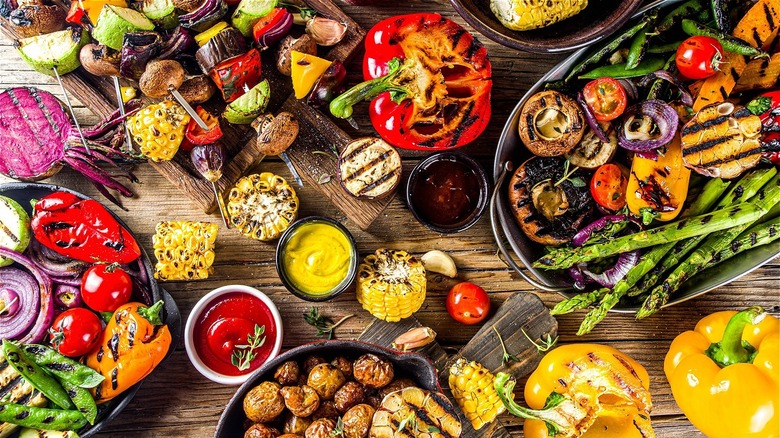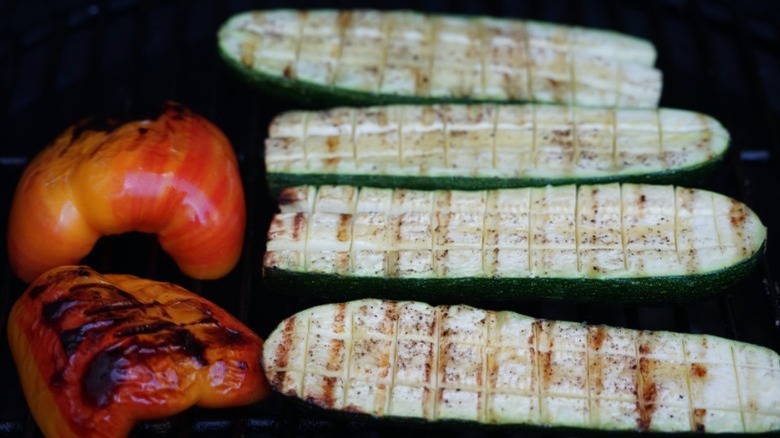This Easy Trick Will Make Your Grilled Veggies Even More Delicious
There are so many benefits to cooking on a grill, whether you are known as the neighborhood's pitmaster or your family's go-to grill guy. Depending on where you live and your degree of temperature tolerance, outdoor grilling can take place year-round; however, springtime is when most of us begin to polish the tools, clean the equipment and get ready to grill.
Grilling makes food taste better, from the 150 million hot dogs eaten in the US on the fourth of July to healthier options like stone fruit and vegetables (via NHDSC). There is a convenience to grilling, especially in the summer heat when cooking outdoors can cool down the house, not to mention reduce time spent washing dishes. It also keeps the cook in the center of the action, showboating their grilling skills (the only time a head of cauliflower warrants a lot of attention), per New York Times.
The high, dry heat of the grill, whether charcoal or gas, can transform even bland veggies by caramelizing their sugars into a sweeter, smokier, and, just as important, visually appealing dish. Those coveted grill marks are not only pretty tan lines but signal the Maillard Reaction has taken place, the chemical reaction that transforms the amino acids in food resulting in a new smell, color, and depth of flavor, per Science of Cooking. Although simple to prepare, cooks can elevate their grilled veggie game with a simple technique, making them more delicious and the star of the meal.
Crosshatching vegetables is a game changer
Most vegetables can be grilled, although not all vegetables should be treated the same way. Before grilling vegetables, chef Brandon Collins told Mashed, "You want the vegetables to be thick enough to withstand the heat, create that nice grilled flavor, and cook all the way through." Preserving the crispness of a fresh vegetable (nobody likes limp asparagus) without burning it, losing it to the grate, or undercooking it while coaxing the most flavor out of the veggie can take practice.
According to America's Test Kitchen, high-moisture vegetables like eggplant, zucchini, and summer squash, large mushrooms like portobello caps, and slices of dense vegetables like sweet potatoes and butternut squash can benefit from cutting a crosshatch pattern in the vegetable before grilling. Crosshatching increases the surface area, allowing the veggie to absorb more flavor, whether from the grill, smoke from the wood chips, or seasoning like a marinade.
Crosshatching is especially beneficial to high-moisture veggies since the shallow cuts allow the interior of the vegetable to be exposed to direct heat. To achieve the Maillard Reaction, the surface of the vegetable needs to be dry. This technique increases the evaporation of excess water, preventing the dreaded soggy, grilled zucchini. Finally, crosshatch marks make a beautiful presentation sure to boast your grilling street cred. To crosshatch, make ¼-inch-deep cuts every ½-inch without going through the vegetable. Turn the veggie 45 degrees and repeat the cuts on a diagonal to make diamond-shaped cuts throughout the surface.

